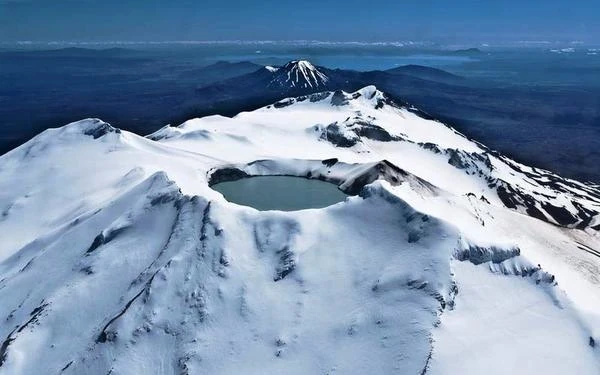
Located at the junction of the Pacific and Australian plates, New Zealand is a true geodynamic laboratory. This position results in intense tectonic activity: subduction to the east, collision to the west, and strike-slip faulting in the center.
The Taupo Volcanic Arc is the most spectacular manifestation of this. It concentrates the most active volcanoes on the North Island, such as Ruapehu, Tongariro, Ngauruhoe, and White Island (Whakaari).
The origin of New Zealand's volcanism lies in the subduction of the Pacific Plate beneath the Australian Plate. This subduction of oceanic lithosphere causes partial melting of the upper mantle due to the addition of water and volatile elements. The resulting siliceous magmas give rise to explosive eruptions typical of subduction arcs.
The magmatic reservoir of the Taupo supervolcano is one of the largest known on Earth. The eruption of Taupo about 26,500 years ago (Oruanui eruption) was one of the most powerful of the Quaternary, releasing approximately \( 1,100\,\text{km}^3 \) of tephra.
New Zealand's eruptions have a direct impact on the population and ecosystems. The eruption of White Island in December 2019, which occurred while tourists were present, highlighted the need for precise monitoring.
The GeoNet network ensures real-time detection and analysis of seismic and volcanic activity. Physical prediction models, based on fluid dynamics and seismic wave propagation, aim to estimate the optimal evacuation time.
Understanding New Zealand's volcanism sheds light on other planetary contexts. The subduction and magmatic differentiation mechanisms observed here are comparable to those presumed on Venus or in the early stages of Mars.
For Harold Jeffreys (1891-1989), a pioneer of mathematical geophysics, Earth's volcanoes act as valves for a global energy system, ensuring the dissipation of the planet's internal energy.
| Volcano / Volcanic Field | Type | Last Eruption | Comment |
|---|---|---|---|
| Ruapehu | Andesitic stratovolcano | 2007 | Acidic Crater Lake; frequent phreatic and magmatic activity |
| Tongariro / Ngauruhoe | Andesitic complex | 2012 | Sequence of moderate explosive eruptions; strong thermal activity |
| White Island (Whakaari) | Basaltic-dacitic subduction volcano | 2019 | Deadly phreatic eruption; restricted access area |
| Taupo | Rhyolitic caldera | ~232 CE | Supervolcano that produced the most violent eruption of the last 5,000 years |
| Taranaki (Egmont) | Symmetrical conical stratovolcano | 1755 ± 15 | Isolated edifice with historical activity; high risk for New Plymouth |
| Mayor Island (Tuhua) | Submarine rhyolitic caldera | ~6000 years BP | Source of obsidian glass exploited by the Maori; current hydrothermal activity |
| Auckland Volcanic Field | Monogenetic basaltic field | ~1450 CE | Over 50 eruptive cones including Rangitoto, recently formed; major urban risk |
| Ngatutura Volcanic Field | Ancient basaltic | ~1.8 Ma | Fossil activity south of Auckland; marks the migration of volcanism northward |
| Okataina Volcanic Field | Multiple rhyolitic calderas | ~1886 CE | Tarawera eruption; destruction of Te Wairoa village; neighboring Lake Rotorua |
| Kermadec Islands | Oceanic volcanic arc | Recent submarine eruptions (2012, 2021) | Intense underwater activity; continuous satellite monitoring |
Source: GeoNet New Zealand Volcano Monitoring, GNS Science, Smithsonian Global Volcanism Program, National Institute of Water and Atmospheric Research (NIWA).